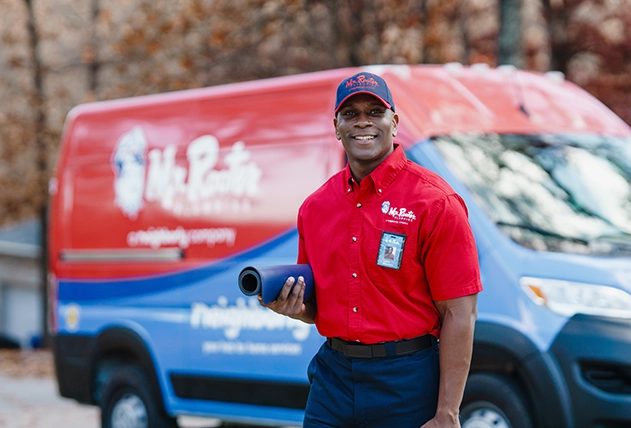
Plumbing can often seem like a complex and overwhelming topic, especially when faced with unexpected issues in your home. However, understanding the basics of plumbing isn't as challenging as it may appear. By familiarizing yourself with a few common terms and concepts, you can gain a clearer picture of how your home's plumbing system works and feel more confident addressing minor concerns or identifying when professional help is needed.
Equipping yourself with simple plumbing knowledge not only empowers you to make better decisions but also enables you to communicate more effectively with a plumber. This can save time, reduce stress, and help ensure any problems are resolved efficiently.
At Mr. Rooter® Plumbing of Southeast Georgia, we are always here to provide expert assistance and trusted plumbing services in Douglas. Whether you need advice, repairs, or routine maintenance, our friendly team is just a call away!
1. Fixture
A device or appliance connected to the plumbing system that provides or uses water, such as a faucet, toilet, shower, or sink. These fixtures allow for the delivery and use of water for various purposes, including drinking, washing, cooking, and sanitation.
2. Drain
A pipe or channel that carries wastewater, including water from sinks, showers, toilets, and appliances, from your home to the sewer system or a septic tank. This essential part of your plumbing system ensures that used water and waste are properly transported away from your property for treatment or disposal.
3. Trap
A curved pipe below fixtures like sinks is designed to trap a small amount of water, creating a barrier that blocks sewer gases from entering your home. Known as a "P-trap" or "U-bend," this essential plumbing component helps keep your home fresh and sanitary.
4. Valve
A device that controls water flow, allowing users to turn it on, off, or adjust the pressure as needed. These are key parts of plumbing systems, ensuring water is distributed efficiently and safely. Examples include shut-off valves, which stop water flow, and gate valves, which control it by raising or lowering a gate.
5. Sump Pump
A sump pump is installed in basements or crawl spaces to prevent flooding and water damage. It removes excess water collected in a sump basin, often from rain, groundwater, or plumbing leaks. When the water reaches a certain level, the pump automatically activates, directing it away from the property.
6. Water Heater
A water heating system is designed to heat water and supply it throughout your home for daily tasks such as bathing, washing dishes, doing laundry, or other household needs. These systems come in two main types: tank-based, which stores hot water in a reservoir for immediate use, and tankless, which heats water on demand as it flows through the unit.
7. Septic Tank
An underground tank designed to collect, treat, and manage wastewater in homes or buildings not connected to a municipal sewer system. These tanks separate solid waste from liquid waste, allowing natural breakdown processes to occur before safely discharging the treated water into a drain field or leach field.
8. Backflow
Backflow, the reversal of water flow, can allow contaminated water to enter the clean supply, posing health risks. It occurs due to pressure changes in the system, like sudden drops or back siphonage. Backflow prevention devices keep water flowing in the right direction, protecting clean water and public health.
9. Pipe Fitting
A component used to connect, branch, or terminate parts of a plumbing system, ensuring proper fluid flow. These are essential for an efficient plumbing network. Examples include elbows for changing direction, couplings to join pipes, and T-joints for branching one pipe into two.
10. Main Shut-Off Valve
The valve controlling your home's water supply is a key part of your plumbing. Knowing its location is essential for quickly shutting off water during emergencies like burst pipes or major leaks. This can prevent costly water damage.
The main shut-off valve is usually found where the water line enters the house, such as in a basement, utility room, or near an external wall. Ensure everyone in your home knows where it is and how to use it.
We're Here to Address Your Plumbing Concerns
By learning these ten basic plumbing terms, you can communicate more effectively with plumbing professionals and take a more active role in maintaining your home's plumbing system. We hope this guide has helped improve your understanding of this vital aspect of homeownership.
If you have any questions or need expert assistance with your plumbing in Douglas, don't hesitate to reach out to our team at Mr. Rooter Plumbing of Southeast Georgia. We are committed to providing top-quality services, from repairs and installations to maintenance and emergency support.
Check our availability online to schedule an appointment!

